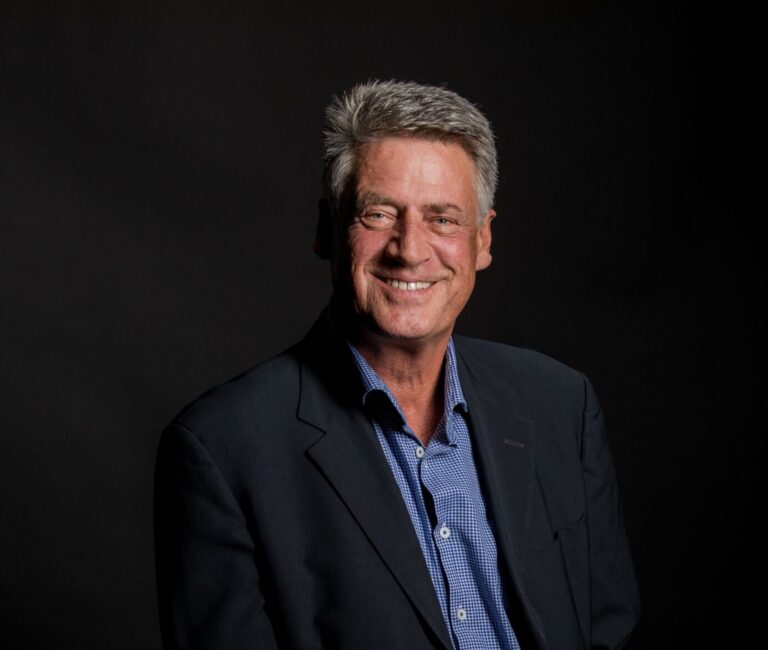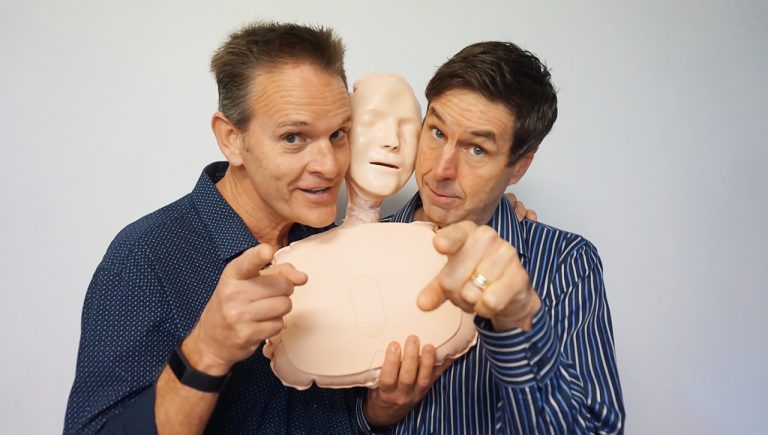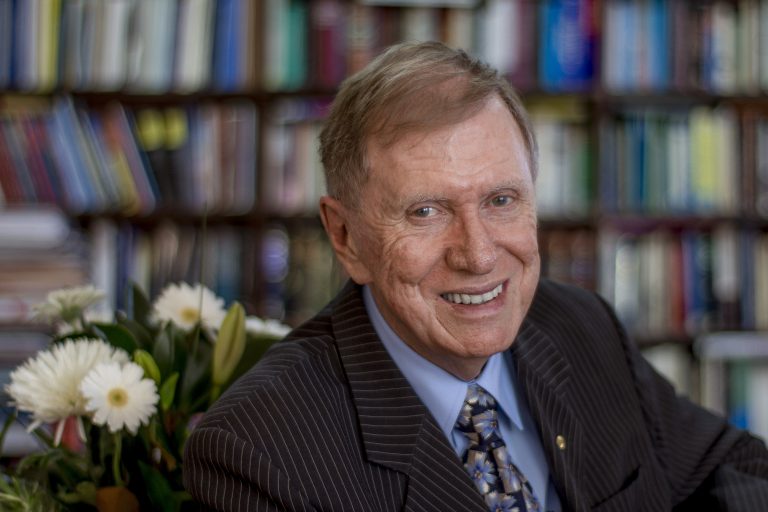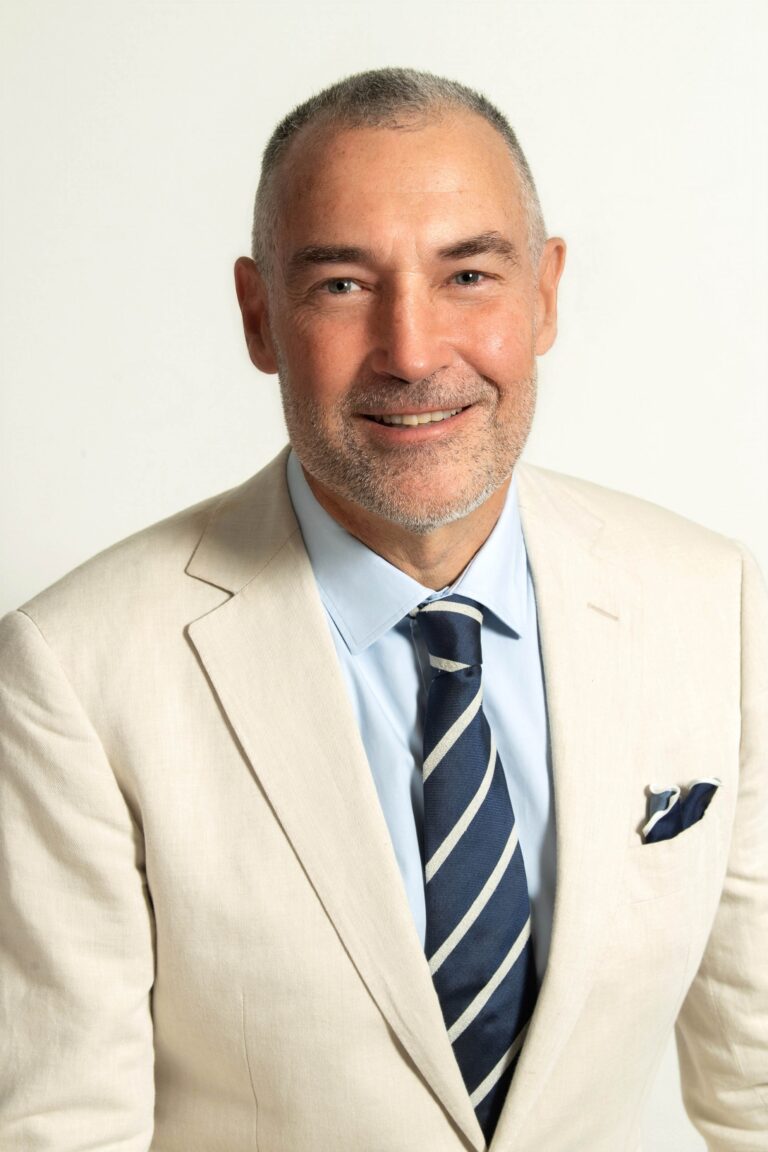Jerry Grayson

Rescue Pilot & Keynote Speaker
Jerry Grayson’s story of an extraordinary career in helicopters, disrupted entirely by the advent of drones, will resonate with any audience.
He’s an unforgettable speaker on topics such as risk management, teamwork, resilience and leadership and is certain to leave audiences inspired and motivated.
From Saddam Hussein’s invasion of Kuwait to the infamous Fastnet Yacht Race, on stage with The Rolling Stones, on location filming Black Hawk Down, filming the immediate aftermath of Hurricane Katrina and broadcasting the Soccer World Cup from South Africa, Jerry Grayson, has a personal story to tell about each one.
Jerry was just 17 years old when he joined the Fleet Air Arm, the youngest helicopter pilot to ever serve in the Royal Navy. By the age of 25 he was the most decorated peacetime naval pilot in history and was awarded the Air Force Cross (AFC) by the Queen for outstanding gallantry in search and rescue.
Cheating the Sea details Jerry’s AFC’s story, offering an inside view of his heroic service. It is an inspirational and celebratory account, excitingly told, frequently funny and highly poignant.
The work of a search and rescue pilot is vital, dangerous, thrilling and on the edge. Hear how Jerry saved fighter pilots who had ditched at sea, rescued desperate sailors from sinking yachts during the infamous Fastnet Race – in which only 85 out of 303 yachts made it back to harbour- and picked up a grievously ill crewman from the deck of a nuclear-armed submarine that was playing a cat-and-mouse game with the Soviet navy.
In 2500 hours of flying with the Royal Navy, Jerry and his crewmates saved more than 70 lives on 120 rescue missions. His story is not an account of one man’s deeds, but a salute to all the men and women he worked with who were able to turn tragedies into triumphs.
Jerry’s adventure didn’t stop when he left the navy. He then set up a production company specialising in footage shot from helicopters and went on to contribute to the likes of Planet Earth, An Inconvenient Truth and the James Bond film A View to A Kill, filming above six continents.
In the world of sport, Jerry’s first world broadcast came from the Sarajevo Winter Olympics in 1984. He went on to command the entire airspace over Melbourne for the Commonwealth Games and over Doha for the Asian Games, in addition to his flying and aerial directing roles using ten helicopters at the Athens Olympics and seven at the South Africa Soccer World Cup.
Jerry also flew as part of the Melbourne, Brazil and South Korea F1 Motor Racing Grand Prix, and supplied the aerial filming unit for the worldwide broadcast at all motor races, from 2010-2013.
Just a few months into 2015, Jerry’s three decades of flying experiences almost entirely vanished into thin air. The DRONES had arrived and taken over. Jerry had to deal with the most extreme form of disruption; when the career he’d so successfully built simply ceased to exist. To enable him and his team to move forward positively, Jerry had to recognize the disruption, address it and learn a whole new way of doing his job.
Most recently Jerry has been using his mastery of drones to create virtual and three-dimensional models of real-world assets. His resultant experience within the Metaverse then led to a comprehensive understanding of cryptocurrency, art NFTs and the world of Web 3.0 – all subjects on which he now teaches in a clearly accessible way.
Jerry has authored two books, Rescue Pilot (2015) and Film Pilot: from James Bond to Hurricane Katrina (2017), which were released by Bloomsbury Publishing internationally.
Jerry Grayson speaks about:
Teamwork – Success in any field will always depend on how well you operate with those who surround you. Jerry speaks about the key elements to a successful team, and compares and contrasts the differences between his small and highly practiced military team versus his larger crews who needed to hit the ground running on major television events, many of whom had never even met each other before day one.
Digital Disruption and Drones – Within a few months during early 2015, Jerry’s three decades of work and experience in flying on major cinema and television productions almost entirely vanished into thin air when the drones arrived and took over. Jerry talks about what he did to address the arrival of drones and move forward positively with his team.
Diversity and dealing with Culture Change – Jerry inspires and educates by reflecting on his career managing aerial broadcast teams (working on the Olympics and similar global events) where he encountered new challenges when dealing with people from diverse cultures and social backgrounds.
Perspective in conflict – It’s perfectly possible for each party to simultaneously be entirely right and entirely wrong, both at the same time. Drawing on his own life experience, Jerry teaches his audiences how and why to take the other guy’s perspective, just for a few seconds.
Passion and Inspiration (for a younger audience) – Jerry draws on his own experiences and that of family to inspire young people and young managers to find their passion and find their inspiration… “The rest will follow. Go out there and do it.”
Leadership and Decision Making – Not until you’re faced with a true dilemma do you properly learn what it is to lead and what it is to carry the burden of your decisions, sometimes for the rest of your life. When the decision you make will impact others, the implications get wider. When another human being will potentially live or die as a direct result of your decision the stakes are at their highest.
Jerry talks about learning to make decisions quickly, to communicate them clearly and to act upon them without looking backwards.
Resilience and stretching your own boundaries – None of us ever know if or when we will be called upon, by circumstances way outside our control, to go beyond what we have previously perceived to be our boundaries. Jerry draws on his experiences to provide audiences with the confidence to persevere and stretch their own boundaries.
Finding the Motivation to be the Best at What You Do and Recognition for What You Do – Jerry draws on his experiences to inspire people to be the very best at what they do regardless of thanks or praise.
Disaster Management in a Crisis – Disasters, of any kind, are characterised by lack of time and lack of structure. Every person regardless of rank, must perform at their very best, thinking for themselves and acting with courage and conviction. Jerry inspires his audiences to regard disaster as an opportunity to shine, to contribute, and to make a difference.
Cryptocurrency, The Metaverse, NFTs and Web 3 – Jerry has been using his mastery of drones to create virtual and three-dimensional models of real-world assets. His resultant experience within the Metaverse then led to a comprehensive understanding of cryptocurrency, art NFTs and the world of Web 3.0 – all subjects on which he now teaches in a clearly accessible way.



